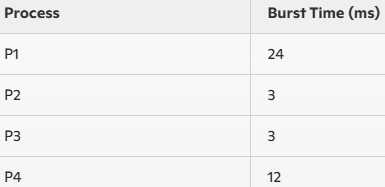Correct option is A
RAID 0 does
not use parity for data redundancy. It provides data striping to enhance performance but offers no fault tolerance or parity protection.
Important Key Points:
1.
RAID 0 is focused solely on
data striping, which increases performance by splitting data across multiple drives. However, it lacks any form of
parity or redundancy, meaning if one drive fails, all data is lost.
2.
RAID levels using parity: RAID 3, RAID 4, RAID 5, and RAID 6 use parity to provide redundancy, helping to recover data in case of a disk failure.
Knowledge Booster:
·
RAID 3 and
RAID 4: Both use
dedicated parity disks. RAID 3 uses byte-level striping with parity, while RAID 4 uses block-level striping with a dedicated parity disk.
·
RAID 5: Uses
distributed parity, meaning parity information is spread across all drives. This allows for
single disk failure without data loss.
·
RAID 6: Extends RAID 5 by adding
an additional parity block, which allows it to tolerate
up to two simultaneous drive failures.
·
RAID 0: Unlike the other RAID levels, RAID 0 has
no redundancy; it is used purely for
performance improvements by distributing data across drives without any parity.






 English
English 40 Questions
40 Questions 20 Mins
20 Mins
